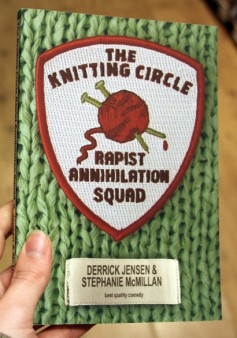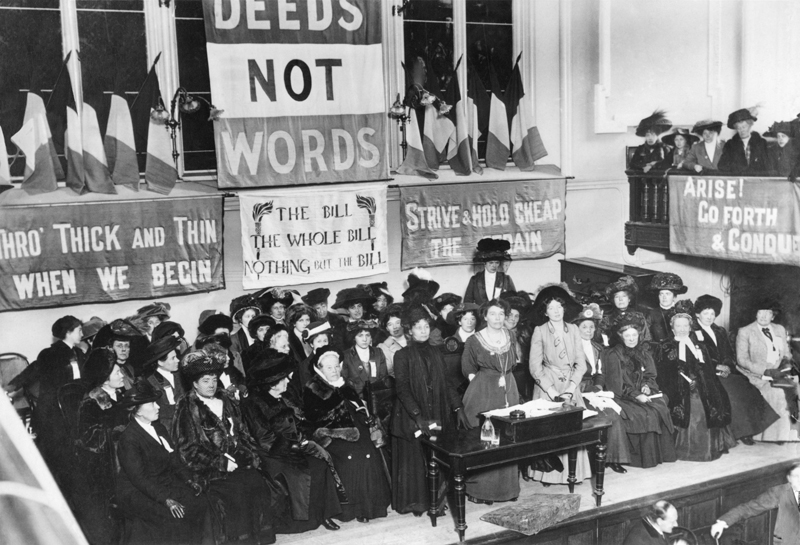This is the second part of a series. Read the first part at Toward Strategic Feminist Action.
By Tara Prema / Gender is War
Developing an effective response to the worldwide crisis of male violence
Strategic Feminism is a framework for collective action against patriarchal violence. The framework is based on acknowledging that the struggle for women’s liberation can – and must – adapt the lessons of asymmetric conflicts, such as guerrilla uprisings against occupying armies. We can apply the lessons of successful insurgencies to our aboveground organizing. And we must do so. It is a matter of life and death: every minute, men rape, abuse, abduct, and murder girls and women. Time is short – we must prepare for worse still to come.
Strategic Feminism draws on the excellent analysis of asymmetric conflict in Deep Green Resistance: A Strategy to Save the Planet. In Part One, we discussed the crisis of male violence against women and sketched a solution based on organizing for action in our communities. Here in Part Two, we look at more ways to begin and sustain our work for radical social change.
We call this model Strategic Feminism because it’s outcome-oriented and focused on creating a movement that addresses the material conditions affecting women’s lives.
Sustaining a movement: Feminism in collapse
How can we create a movement in a time of collapse? How do we come together as a force for change when individuals burn out, groups fall apart, and coalitions fracture? When feminists are fighting each other on questions of gender, motherhood, sexuality, and privilege?
And how to do we take these steps now, when every day brings more signs of cultural, economic, and environmental collapse? How do we adapt our strategies to a world order that is reeling from one crisis to the next? This is our challenge.
As radical women, we must pledge to protect each other and the places we love, just as women have done since the time they burned us as witches.
 Keeping the spirit
Keeping the spirit
At the core of this movement, there is an intangible force with a measurable impact. It’s an attitude, a mindset, a determination that compels us to push back against oppression. It’s the warrior mindset, the stand-and-fight stance of someone defending her home and the ones she loves.
Many burn with righteous anger. This is important – anger lets us know when people are hurting us and the ones we love. It’s part of the process of healing from trauma. Anger can rouse us from depression and move us past denial and bargaining. It is a step toward acceptance and taking action.
Rewriting the trauma script includes asserting our truth and lived experiences, and naming abuses instead of glossing over them. It includes discovering (and rediscovering) that we can rely on each other instead of on men. It’s mustering the courage to confront male violence. But it’s not going to be easy.
Acknowledge and #NameTheProblem
We can’t fight a problem we can’t identify, especially when it is deliberately obscured. It’s not surprising that naming the problem has become a political act. And the problem is male violence against women. We shouldn’t have to say “she was raped” when we know that “men raped her.”
Reclaim what was taken from us
- Learning (and re-learning and reminding each other) that our bodies and spirits belong to us, we deserve to be safe, and we have the capacity to defend ourselves
- Fighting isolation and connecting with other women who have a similar fighting spirit
- Creating a culture of resistance to male violence
Taking action
Strategies are the paths to the goal. Tactics are the means to implement strategies. Part of a strategy for sustaining a movement is networks of peer support, mutual aid, and solidarity. We start by coming together with our peers, women who share the same goals and principles.
Goal: Develop a thriving network capable of effective action
Strategy: Find women allies and start a group
Tactics:
 Start with a small circle: each one invite one.
Start with a small circle: each one invite one.- When you get an invitation, go!
- Use a petition or sign-on letter to gather potential recruits.
- Screen and interview volunteers.
- Discuss and write up a basis of unity
- Hold meetings, discussions, films, work parties, and benefit shows.
- Keep a signup sheet and a list of participants.
- Retain volunteers through appreciation and peer support.
- Raise money for projects and community campaigns.
Strategy: Start with an existing group
- Entryism – add members until your crew has a majority
- Headhunting – join in order to recruit members to your group
- Affinity group – organize an action team within the group
- Symbiosis – utilize the group’s resources and membership for your project
Strategy: Build a coalition
- Circulate a sign-on letter
- Organize against a common political enemy
- Host an event: A symposium, press conference, rally, or direct action
- Pledge to support and not publicly denounce each other
- Collaborate together on an ongoing project
Strategy: Keep each other safe and supported
- Have designated safe houses and emergency plans
- Set up a legal defence fund and legal team before they’re needed
- Create a mutual aid network so women activists can support each other
- Make and distribute an activist safety/security plan to stop online hackers and physical attackers
- Prioritize peer support and peer counseling, whether it’s formal or informal.
- Keep a “not wanted” list to weed out known disruptors
- Host group self-defense and security awareness trainings
Choosing our battles
How do we decide on a particular project, campaign, action or strategy? We can ask:
- Is it effective? What will it achieve?
- What are our goals (immediate and long-term )? How does this action lead there?
- Who is working with us?
- Do we have community support? From which communities?
- What decision-makers are we targeting?
- What are our strategies and tactics? (Legal, confrontational, revolutionary?)
- Do we have the resources? (People power, funds, vehicle?)
- How can we get the resources? (Recruiting, crowdfunding, direct appeals?)
- What are the possible negative outcomes? How can we mitigate the negatives?
Some actions and projects aren’t intended to lead to concrete results – they are symbolic in nature but still useful for boosting morale, getting media attention, and recruiting volunteers.
Male allies
Male allies can – and should – make substantial contributions to the movement. Consider asking women what we need to sustain our work, and then providing that without judgment or trying to exercise veto power. Men who take on ally roles should turn to other men for peer support and take time to debrief with them regularly.
Remember to regroup
Every campaign, project, and group will stall eventually. We invariably reach the point when it seems our efforts are going nowhere and our adversaries are dragging us down. This is when we must re-group and re-commit ourselves or fail. Every goal worth fighting for is going to face a serious backlash from those in power.
In spite of all our planning, our groups and coalitions still fall apart due to lack of unity, loss of commitment, burnout, and the divisive pressures of racism, classism, misogyny, and disruption from outsiders. Overall, things are not going to get better on their own. In the endgame of capitalism, the situation for women as a class worldwide is deteriorating at a fearsome rate. It’s up to us to prepare for the worst.
In the short term, this anti-feminist backlash is intensifying. Planning now is crucial. Some readers may not see the immediate need for this laundry list of tactics and strategies. But the day is coming when the need for community networks of trust will be urgent, because so much of what we rely on now has collapsed.
These notes come from unceded indigenous territory on the frontier of resistance to the western patriarchal invasion.


Trackbacks/Pingbacks